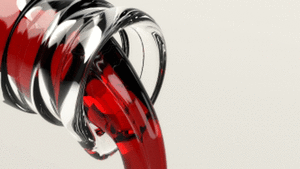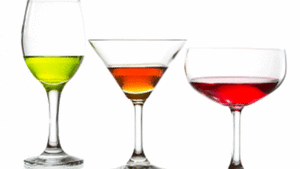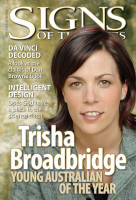John Ashton pulls the cork on the uncounted costs of alcohol.
Recently I read a disturbing newspaper front-page headline: “Horrific child abuse figures spur crusade.”1 The article that followed described child abuse as “a national epidemic.”
Not surprising. I also recently read a report, released at the beginning of 2006, showing how, since 1999, the number of child-protection notifications had more than doubled, from 107,134 to 252,831 in 2004-05.2 Girls were more likely to be the victims of sexual abuse, and boys more likely to be the victims of physical abuse. Single-parent families were significantly overrepresented in confirmed cases of abuse.
While the role of alcohol in child abuse wasn't specifically mentioned in the report, there's ample evidence alcohol abuse is a significant factor in a chain of events that ultimately manifests as child abuse. For example, studies have shown domestic violence is much higher in households where the husbands are often drunk, and some statistics suggest a husband's drinking is a major cause of 27 per cent of marriage break-ups.3
In Australia, approximately 50,000 couples divorce each year. This means that around 100,000 children see their parents separate each year. In terms of the alcohol connection, about 25,000 children each year will suffer the emotional pain of seeing their home torn apart as a result of their father's drinking. Yet no alcohol drink labels carry the warning: “Drinking may be harmful to the health of your children.”
In 2001, 25 per cent of Australian families with children were single-parent families. Mothers comprised 83 per cent of these.4 For them, there's also an increased violence risk. Studies of domestic violence in Australia have shown that 41 per cent of children living with mum and her partner have witnessed the male partner being violent toward their mother, whereas only 14 per cent of children living with both parents witness a similar event.5
Alcohol is a significant factor in marriage break-ups, yet divorce is rarely counted in the estimates of alcohol's effect on the community. The problem isn't just the financial costs of running the courts and welfare system associated with family break-up, but also the cost to the innocent lives caught up in these processes.
Alcohol–homeless Connection
Revealing statistics came from research carried out some years ago by the Australian Human Rights Commissioner, Mr B Burdekin. Burdekin's report on youth homelessness cites the breakdown of family relationships as the single greatest factor in youth homelessness. About 25 per cent of homeless children come from single-parent families and about 40 per cent from blended families, where there is a higher rate of sexual abuse. In some cities, nearly half the homeless girls surveyed had toddlers of their own living with them on the street. Burdekin found that in homes where the mothers remarried or lived in a de facto relationship, sexual abuse of girls was seven times more common than for girls living with their natural fathers.6 Put together, these findings highlight the serious risk to young girls who live with a stepfather who drinks heavily.
Burdekin reported that out of 100 teenage girls seeking help at a refuge centre in one northern Queensland city, the majority had been raped by their father, stepfather or mother's boyfriend.7 To most of these children, home had become unbearable. In the majority of cases, their parent or de facto parent had sacrificed their duty of care to alcohol.
The Legacy of Alcohol Abuse.
Child abuse can be in more subtle forms than those reported to authorities, and studies of the children of alcoholics show that they are scarred emotionally for life.8 Adult children of alcoholics tend to constantly seek approval and affirmation. They also tend to be extremely loyal, even in the face of evidence that their loyalty is not deserved nor respected. They are usually super-responsible or super-irresponsible. They often feel they are different to others and attempt to guess what normal behaviour is. They tend to lock themselves into a course of action without giving consideration to its consequences, while at the same time they can have difficulty following a project from beginning to end. Often they find it difficult to “have fun,” taking themselves very seriously and judge themselves without mercy.
These emotional needs and behaviour disabilities normally don't stand out. They're revealed only to those who have come to know them well. For this reason this type of psychological damage is often missed by teachers, counsellors and community workers.
Often the children of alcoholics have been robbed of their childhood. They live in the constant fear of violence. They go to school and come home not knowing what to expect. Many see their parents fight daily. Many are themselves abused verbally, physically or sexually. They see household things broken and smashed, and sometimes their own special treasures destroyed. They are hurt badly and deeply by the people they love.
These children are trapped, they are generally powerless to bring about the changes they long for. Some try to cope by pretending their parent doesn't drink and they never talk about it to others. Many can never talk about the incest and sexual abuse they suffer. Children of Alcoholics data suggest sexual abuse is three times more common in alcoholic households than in the general population. Up to 80 per cent of women in prisons were abused within their families as children—with alcohol involved in most cases.9
The children of alcoholics also seem to assume the role of metaphoric characters within their families. For example a child—usually the firstborn—often becomes the family “hero.” The hero always does what is right, is a high achiever at school, and puts others first. Another child may become “the lost child,” typically withdrawn and a loner. Another child may become a “scapegoat,” feeling hurt and angry, and reacting in hostile and defiant ways. The youngest child usually becomes the family “mascot.” This child tends to be immature yet charming, often becoming the family clown.
In other words, an alcoholic household can become a pathetic little play in which each of the members takes a role. A booklet, Alcoholism: A Merry-Go-Round Named Denial, which has been distributed by Al-Anon for more than 20 years, describes some of the roles played.10
Al-Anon is an international support group set up by Alcoholics Anonymous for spouses and friends of alcoholics, providing a meeting place for them to talk openly about their feelings and their problems. These meetings help family members come to grips with the guilt and the shame. They realise there are people they can turn to for emotional support.
Many children now cope in non-caring situations by running away from home, joining the numbers of homeless children in our cities and the so-called feral children of country towns. In the cities, many homeless children are being forced into prostitution to survive. Their lives are often irreparably damaged by the drugs and diseases commonly associated with prostitution.
In some towns, homeless children run wild. In one New South Wales town it was reported that children, some as young as six, were roaming the streets at night in packs.11 In seven months, the town of only 3500 saw 70 shopfronts smashed and a single supermarket vandalised 25 times. Cars were stoned, windscreens smashed and people abused. The children involved were those for whom nobody cared. The families, in most instances, had broken down under the influence of alcohol. With high unemployment in the area, the town mayor reported that many families routinely converted their social-security benefits into alcohol.
The mayor also had reports that some children as young as three or four were going to bed drunk at night, because it was easier to give them a glass of port than a meal.
Domestic violence is a major problem in such families. The examples from this town give a clear example of alcohol dependency producing feral children. Yet it is the right of parents to buy as much alcohol as they want and the right of alcohol vendors to sell alcohol to these people. But these rights should be questioned.
Writing in the Medical Journal of Australia in 2002, researchers from Curtin University in Western Australia reported that 67 per cent of Australians over 14 years of age drink alcohol in excess of the National Health and Medical Research Council's Australian guidelines.12 For the sake of our children—all of our children—urgent action needs to be taken to reduce alcohol abuse. I suggest that to begin, a ban on alcohol TV and radio advertising be implemented, along the lines of cigarettes bans. Alcohol is with us to stay, so in order to limit its consumption, I advocate a reduction in easy access to alcohol, through reducing the number of alcohol takeaway outlets within the community, especially those adjacent to or within the supermarkets.
Beyond that, more education is needed, of which this article is a start.






